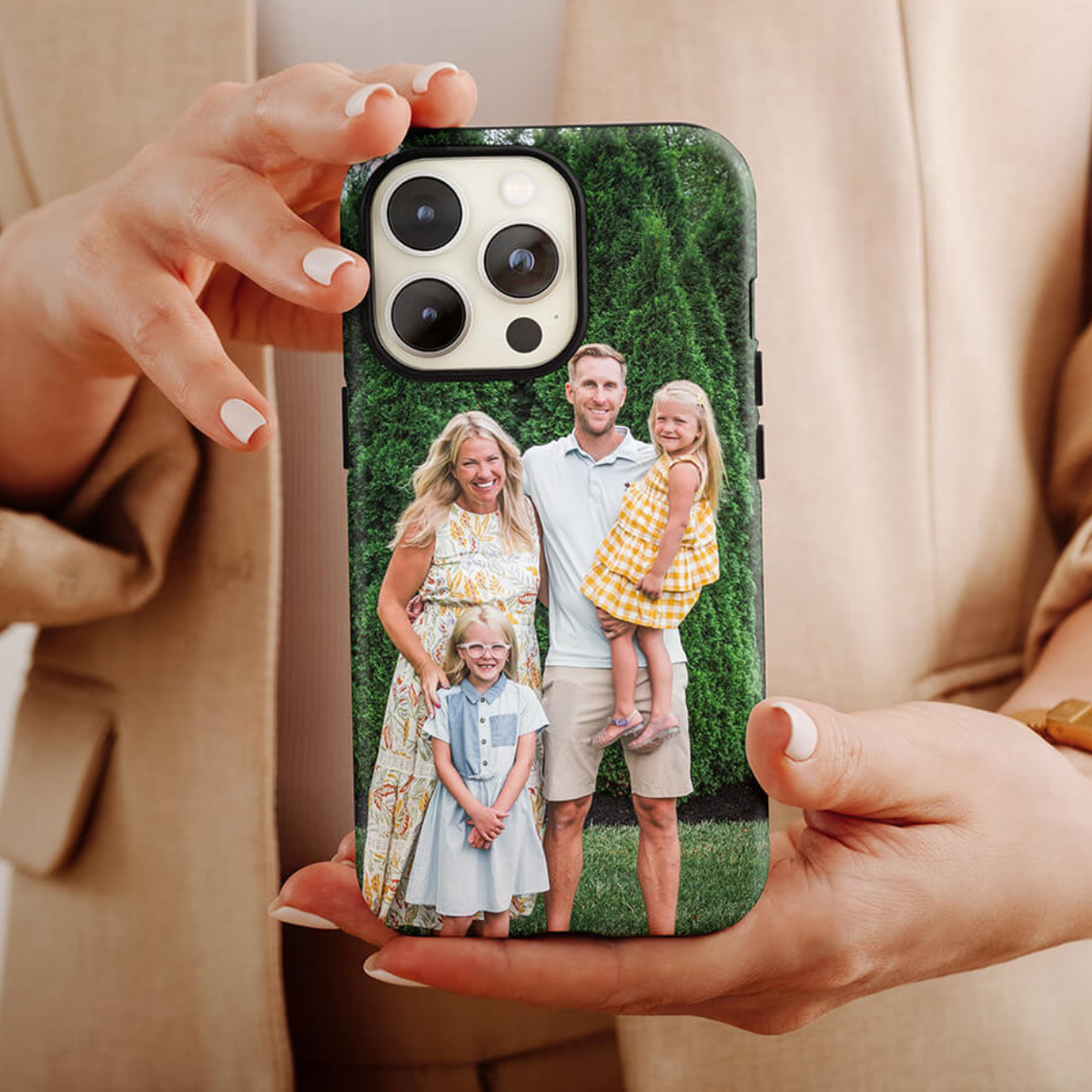Eco-Friendly Guide to Managing Old Phone Cases
Table of Contents [show]
Phone cases have become common in the recent past, and their demand has been increasing with the emergence of smartphones. These phone cases end up being disposed of, causing environmental pollution. Your old phone cases can be recycled, or you can choose to use eco-friendly ones.
Common Materials Used for Phone Cases

The mobile phone accessories market has been growing rapidly at a constant pace with the release of new mobile phones. According to Verizon, on average, a consumer spends about $40 on a phone case when acquiring a new phone. Every day millions of phone cases end up in landfills. A wide range of materials are used in making mobile phone cases, and some of the common ones include silicon, leather, plastic, wood, fabric, among many others.
1. Polycarbonate
Polycarbonate is an amorphous thermoplastic material that finds a wide range of uses, and it is popular in mobile phone casing. They are strong, durable, and weatherable. Besides, they come in a wide range of colors, making them suitable for customizable designs. It is highly valued for its high-impact resistance qualities. However, polycarbonate often requires extra coating to provide additional protection because they are not scratch resistant. Some polycarbonate phone cases come with thermoplastic polyurethane (TPU) or silicone for better grip and shock absorption to reduce the chances of the phone slipping.
Pros:
- It is affordable
- Durable
- Flexible
- Offers better grip
- Offers the best protection
- Lightweight
- Easy to clean
Cons:
- It's not scratch resistant
- Not sustainable
- Discolors easily,
2. Silicon
Silicon is a polymer of synthetic compounds also known as polysiloxanes. It is flexible and can absorb shock better. Unlike rubber, silicon can hold up exceptionally well in extreme cases of cold. Besides, it's soft and has a more grippy texture making it less likely to slip from your fingers. Naturally, silicon is one of the most abundant elements on earth
Pros
- Offers better protection
- It comes in diverse styles and colors
- They have excellent grip
- Lightweight
- It's biodegradable
- Not prone to scratches
- Resistant to water, fire, fungus, and chemicals
Cons
- It has static electricity properties and attracts dust
- Easily lose shape with time
- Poor conductor of heat and can retain heat for long
- Silicon is sticky and can be difficult to put in the pocket
3. PU Leather
PU leather is an imitation of real leather and is also known as synthetic leather. It is commonly known as vegan leather if it's 100% PU leather. However, a typical way of creating PU leather is using a plastic polyurethane or polyurethane coating and applying it to a base made of fiber (commonly polyester). PU leather has the same texture as real leather, though it tends to tear more easily. It offers protection to your phone like genuine leather besides being more affordable. If you're allergic to leather, then PU leather is the best option for your phone case. It is susceptible to cracking and can be damaged by the sun's UV rays.
Pros
- Comfortable
- Stylish and elegant
- It is cheaper
- Easy to clean
Cons
- It does not last as long as the genuine leather
- It will crack and peel over time
- Often does not develop a patina
4. Carbon Fiber
Carbon fiber is one of the strongest materials besides being light. In strength, carbon fiber can rival steel, and they find use in numerous industries from automobiles to aerospace and sports. Due to their unique properties, they are also used in making phone cases. Carbon fiber material has high tensile strength and is resistant to chemicals.
Pros
- Durable
- Exceptionally thin and light
- Very attractive
Cons
- Expensive
- May offer limited protection
- Can interfere with the phone signal
5. Other materials
Other materials used in the manufacture of phone cases include wood and metal. Most wooden cases are made from bamboo because they are eco-friendly and are lightweight. Wooden phone cases offer a firm grip and offer good protection. However, they require good care constantly because they can be easily deformed, especially when they contact water.
Pros
- More preferable than plastic
- Attractive
- Highly customizable
- Easy to grip and hold
Cons
- Not very protective
- Not widely available
- It's expensive
Metal is often among the hardest and reliable materials in making phone cases, but they're not so popular. Metal cases would be heavy, bulky, and expensive compared to other covers. Typically, metal is used in making backplate cases that protect the phone's body, and you may require additional protection for the screen. The common metal used in manufacturing phone cases is aluminum, although you can come across titanium, brass, or golden cases. Metal can interfere with wireless charging systems due to magnetic shielding.
Pros
- Durable
- Offer excellent protection if your phone falls
- Modern and sleek-looking
Cons
- Can interfere with phone signal
- Very expensive compared to other types of cases
- They can be slippery and difficult to hold
Qualities of an Ideal Phone Case
When looking for a phone case, there are some things to look at, including protective features, usability, compatibility, and the impact on the environment. Some of the things to look for in an eco-friendly phone case include the following:
- Made from sustainable materials
- Made using recycled materials, or it can be recycled
- Made using a clean production process
- Climate compensated shipping
Usage of Phone Cases over the Years
The 2000s was a new era in the phone industry, and it was in 2000 when Nokia released the first phone that could fit into the palm and had a screen that could be touched to dial. It was one of its kind and caused more people than ever before to have a cell phone. In 2002, the Sidekick phone was released that had a full usable keyboard, and it was during this time, phone cases emerged for some select phone models. They were not used as a protection but for aesthetic purposes that allowed the user to change the phone's color. Phones were still made of sturdy materials.
In 2007, Apple Inc. produced the iPhone that changed everything. Although Blackberry became the first to offer users texting, email, and internet access, iPhone introduced a larger screen with more capabilities in their devices that captured the interest of consumers. It was during this time when social media became popular with users. Since iPhones were expensive and had a larger screen that was easy to break, there was the need to have extra protection, and phone cases became essential. This saw the explosion of phone cases becoming part of smartphones.

Today phone cases have become a necessary part of phones, and the demand has soared because users want to protect their devices and prolong their lifespan. In 2020, the global market for phone cases was valued at $10.9 bn, and it is projected to reach $35.5 in 2025.
All these phone cases will be discarded after a few years of using and they can
- Pollute land and waterways
- Leach harmful chemicals into the soil like lead, cadmium, and phthalates.
- Disintegrate into microplastics
- Cause death to animals
Creative Ways to Upcycle Old Cases
Consumers love to make upgrades anytime a new model is in the market, and therefore phones and their cases are discarded. Since these plastic cases keep on piling, you can design a creative way to use them. Here are some lovely fun ideas that turn those phone cases into use again.
Make a Soap Dish
Most phone cases have a rear hole for the camera, making it a perfect tray for your bathroom soap and sponge. While in use, the water drains straight into the sink, leaving your soap and sponge dry.
Ring and Bracelet Tray
While traveling, or just in your bedroom, pack that old phone case and use it as a ring and bracelet tray. If you want to easily trace these ornaments, ensure that they are kept safe in a place easily accessible. Color youth tray to give it the tidy looks you desire.
A Makeshift Luggage Tag
In most offices or travel waiting bays, some poles are strategically planted to aid in hanging bags. After several people have placed their bags, it becomes hard to figure out your luggage quickly. In this case, a phone case would serve as a name tag on each bag for easy identification.
Make a notepad
It's easy to design a notepad by sticking the notes inside the case and hanging a pen on a string. The case works as a quick notice board for your reminders.
Where to Send Phone Cases for Recycling

You'll also need to get a case when you acquire a new phone because different phones come in different sizes, shapes, port placements, and demands. In such a case, the question is about where and how to dispose of the older phone and the phone case.
TerraCycle
TerraCycle is one of the dedicated companies that recycle everything. The company partnered with PopSockets to facilitate a phone case recycling program. If you need their services, you only need to sign up for a free mailing label and ship cases from a given brand to the company for recycling.
Pela Case
Pela Case is a company known for both recycling programs and selling compostable phone cases. After buying a case from them, they offer you an envelope to use when mailing back the old case. Don't worry about the case's material; Pela gets it done. Additionally, the company only offers unique phone cases made from plants using a proprietary blend of Terratek and Canadian flax shive.
RECASETiFY
You can send your old phone cases to be recycled free of charge. CASETiFY is a phone case brand and has a program known as RECASETiFY that recycles phone cases through the TerraCycle Zero Waste program. Once you send your old case, you are awarded a 15% off coupon on your next phone case made from recycled materials.
Donate the Old Phone Case
While recycling the old phone cases is the best option, many people out there may also need your old phone case. Organizations such as the Salvation Army and Goodwill will happily collect any donated phone cases.
References:
Allen, J. (2021, October 21). Best eco-friendly phone cases: where to go for a biodegradable case. TechRadar. Retrieved October 27, 2021, from https://www.techradar.com/best/best-eco-friendly-phone-cases
Carman, A. (2018, August 14). Verizon and AT&T have vastly different ideas about phone cases. The Verge. Retrieved October 27, 2021, from https://www.theverge.com/circuitbreaker/2018/8/14/17441686/verizon-at-t-phone-case-designer-selection-next-gen-store
Grandview Research. (n.d.). Mobile Phone Protective Cover Market Size | Industry Report, 2019–2025. Retrieved October 29, 2021, from https://www.grandviewresearch.com/industry-analysis/mobile-phone-protective-cover-market
Krosofsky, A. (2021, March 8). What to Do With Old Phone Cases: Where to Recycle, Donate, and More. Green Matters. Retrieved October 27, 2021, from https://www.greenmatters.com/p/what-to-do-with-old-phone-cases
- (n.d.). Phone Cases and Pollution: The Effects and Solutions | Eco Inspo. WeEarth. Retrieved October 28, 2021, from https://www.wearthlondon.com/blog/phone-cases-and-pollution-the-effects-and-solutions
- (2021, October 13). Can You Recycle Phone Cases? (And Ways To Dispose of). Conserve Energy Future. Retrieved October 27, 2021, from https://www.conserve-energy-future.com/can-you-recycle-phone-cases.php
Research And Markets. (2020, October 8). Worldwide Mobile Phone Protective Cases Industry to 2028 - Key Drivers and Restraints. GlobeNewswire News Room. Retrieved October 28, 2021, from https://www.globenewswire.com/en/news-release/2020/10/08/2105395/28124/en/Worldwide-Mobile-Phone-Protective-Cases-Industry-to-2028-Key-Drivers-and-Restraints.html
RESET.to. (n.d.). The Social and Environmental Impact of Mobile Phones | Green Living. Retrieved October 28, 2021, from https://en.reset.org/knowledge/ecological-impact-mobile-phones
Sustainable Jungle. (2021, September 22). 11 Eco Friendly Phone Cases for a Sustainable Cell. Retrieved October 27, 2021, from https://www.sustainablejungle.com/sustainable-living/eco-friendly-phone-cases/
Techno FAQ. (2016, March 10). The Best Mobile Cases Material. Retrieved October 27, 2021, from https://technofaq.org/posts/2016/02/the-best-mobile-cases-material/
The Salvation Army Thrift Stores. (n.d.). The Salvation Army Thrift Stores | Donation Valuation Guide. Retrieved October 29, 2021, from https://satruck.org/Home/DonationValueGuide
Zenkova, V. (2021, February 12). Why You Should Start Using Eco Friendly Phone Cases. IDEAS For Us. Retrieved October 28, 2021, from https://ideasforus.org/why-you-should-start-using-eco-friendly-phone-cases/












